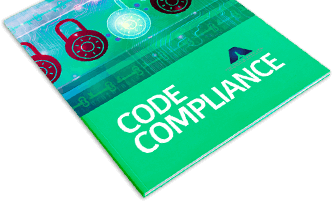The Meaning of Safe Ratings
To the common eye, all safes look the same and appear to do the same job:
- They’re large
- They’re heavy
- They have some sort of digital or analog combination
- They’re tough to crack
- Most importantly, they keep your belongings safe
If you’ve ever looked closely at a safe, you’ll notice letter markings on it. These safe ratings are designed to help communicate the safe’s specific features – as well as to help you make an informed decision on selecting the right safe for your needs.
Keeping that in mind, let’s take a look at some of the letter markings you’ll find on any safe and what do they mean to you.
UL Ratings
UL stands for Underwriters Laboratories. Based out of the United States of America, UL participates in the safety analysis of many new technologies.
UL has been testing and rating products for over 100 years, and are considered the leading authority when it comes to evaluating and certifying products for safety and performance.
Any home safe (or any product, for that matter) which bears the UL logo has been tested and has passed the strict standards of Underwriter Laboratories.
TL Ratings
TL rated safes are combination lock units which are protected against:
- Mechanical tools
- Electrical tools
- Cutting tools
A safe with a TL rating is strong enough to withstand tough abuse for a period of time from:
- Picking tools and hand tools
- Grinding tools
- Carbide drills
- Cutting wheels
- Power saws
- High-impact hammers and mallets
- Welding and cutting torches
B-Rating & C-Rating

Both safes feature tough door locks and re-locking components. However, the thickness of the walls and doors differ between B- and C-rated safes.
B-Rating:
- Walls are less than ½” thick
- Doors less than 1” thick
C-Rating:
- Steel walls at least ½” thick
- Doors at least 1” thick
Fire ratings
Most safes are manufactured to withstand extreme heat and fire conditions. In order to validate this belief, testing fireproof safes requires seeing if the safe can survive varying furnace heat for specific amounts of time.
For example, a safe with a fire-rating of Class 350 1-hour means that the internal temperature of the safe will not exceed 350F for at least one hour when exposed to temperatures exceeding 1700F.
Safes usually have 1-, 2-, or 3 hour classification levels.
In addition to testing the safe’s capacity to withstand heat, the safe is also tested against explosions. Once a safe is heat-tested, it will be dropped from a height (usually 30 feet) to see if it will explode.
Find the right safe for you at Aim Lock & Safe
Keep your personal or business belongings secure in a safe which is tough enough to handle your protective needs.
We have several types of safe protection available for you to choose from. Each one has been tested to handle the most stressful conditions it could be put under – and keep on working.
Contact us today to learn more about our selection of safes.






